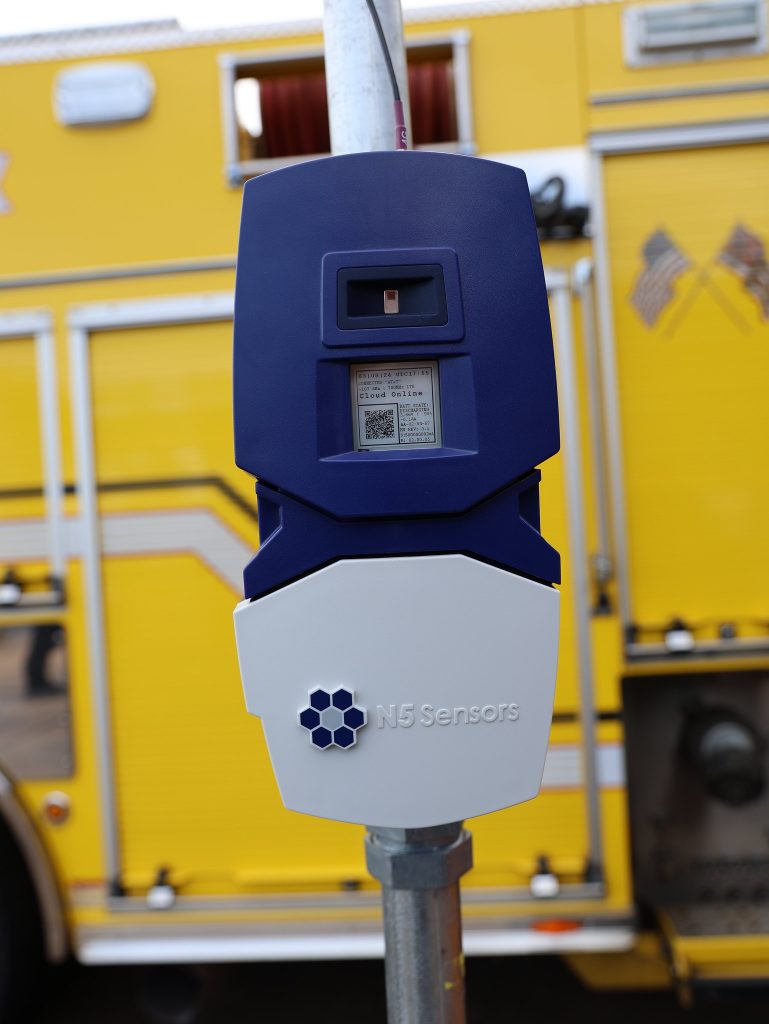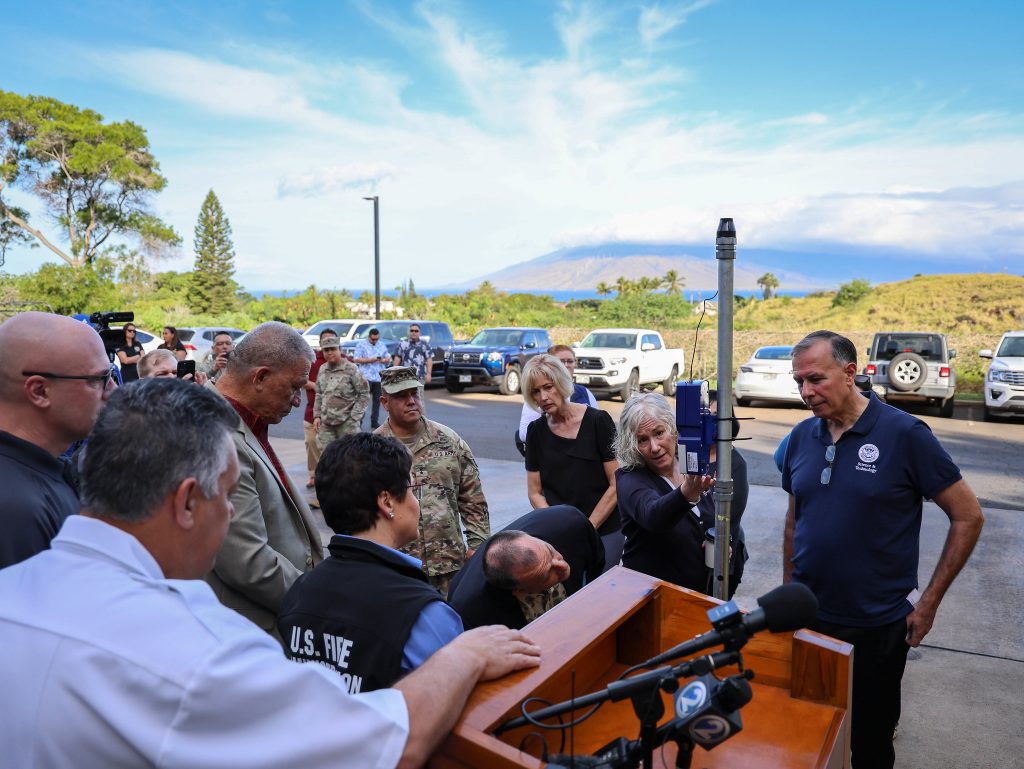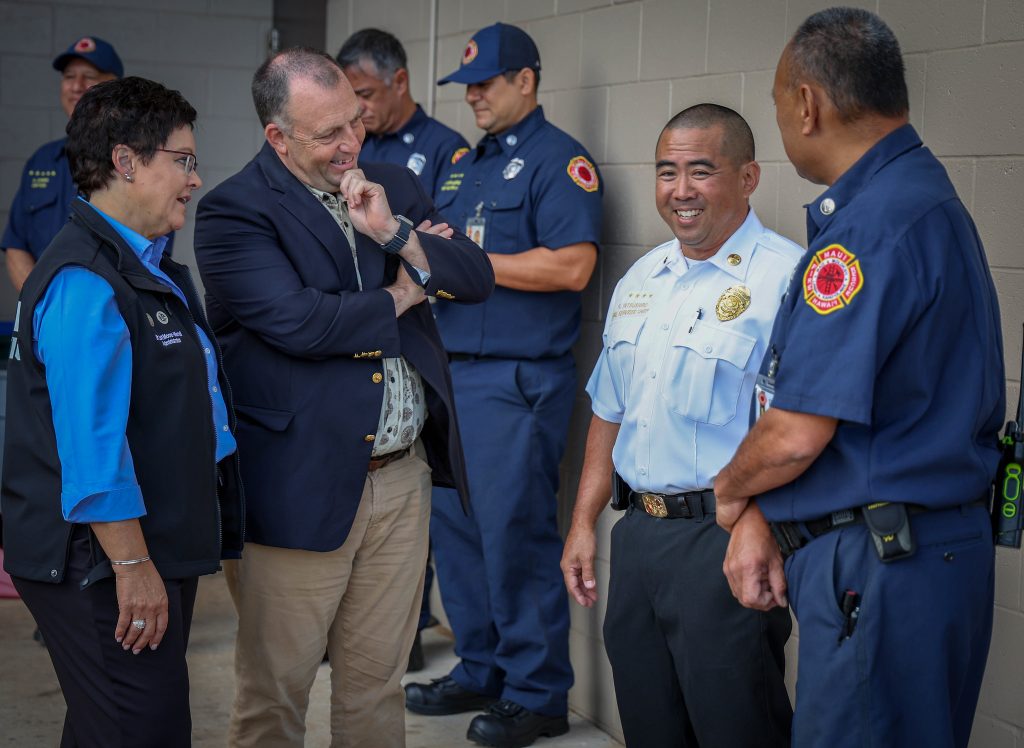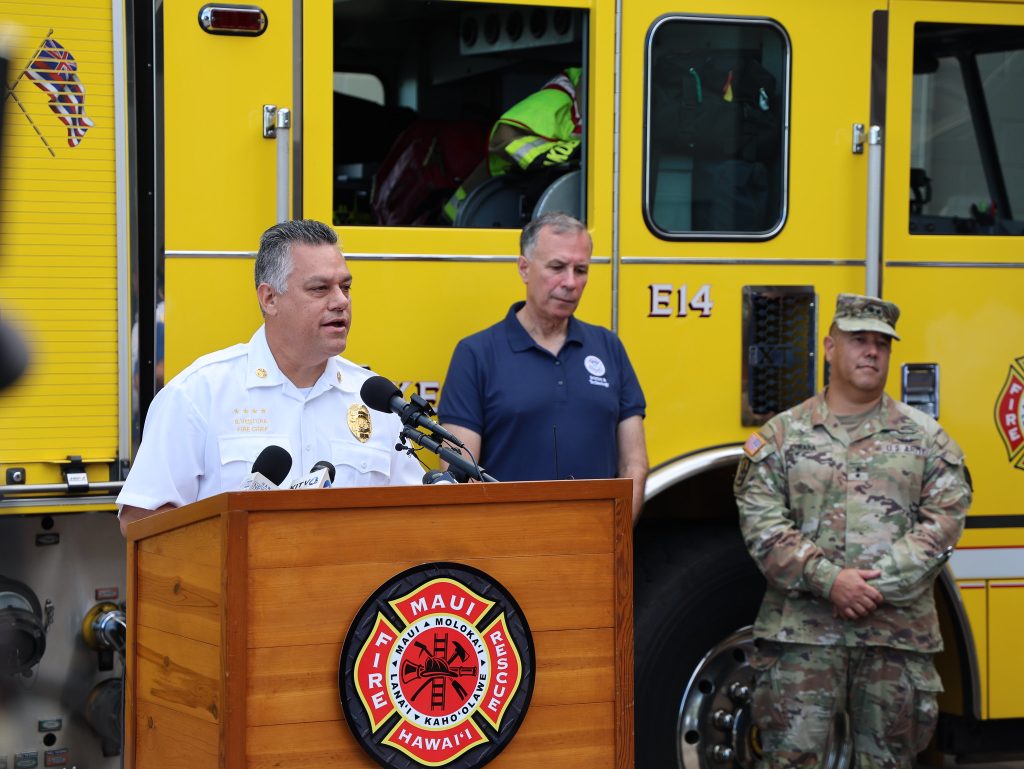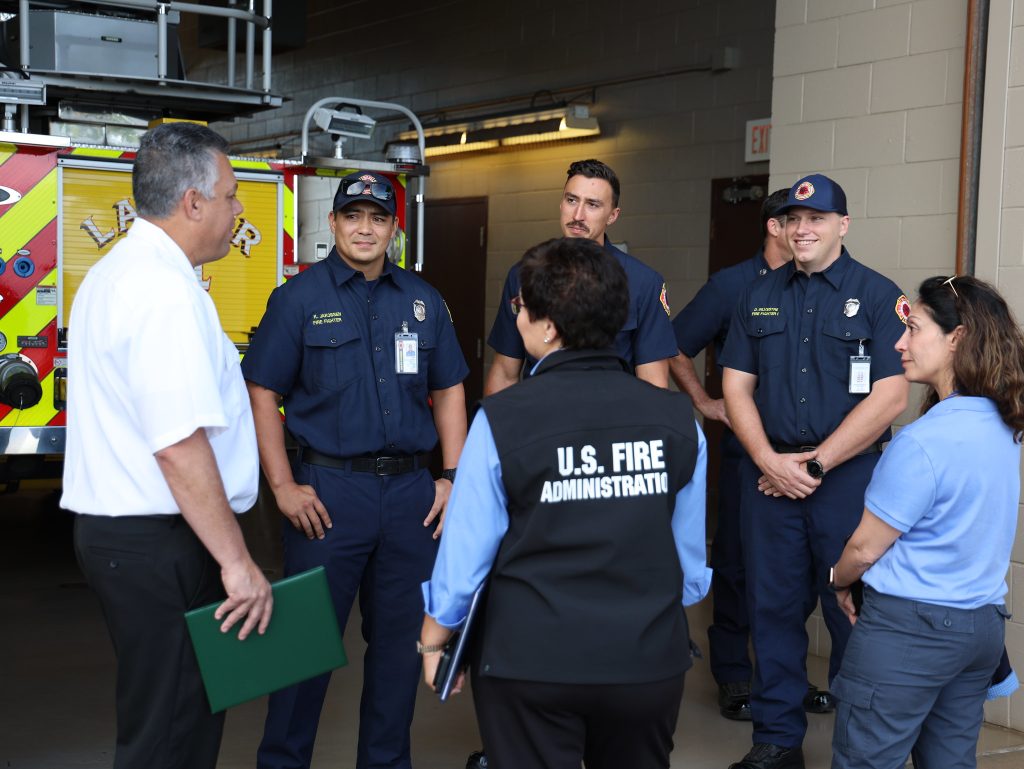Advanced wildfire detection sensors to be deployed in Maui’s high-risk areas
Early wildfire detection and wind sensors are on their way to Kīhei and Lahaina, public officials announced at a press conference in South Maui today.
Utilizing a combination of thermal imaging, gas detection and Artificial Intelligence (AI) algorithms, the wildfire sensors work together to detect unusual concentrations or spikes in levels of particulates and carbon monoxide to detect wildfire ignition in real time.
“What’s important is we get to the scene as fast as we can so that we can catch fire in incipient phases,” said Maui Fire Chief Brad Ventura. “Today, we share one more tool that’s going to help expedite our responses to our communities.”
When these components are detected, the sensors transmit information via email or text notification to pre-programmed contacts. The system housing is small enough to be able to sit on a utility pole or a traffic light and can work in all weather conditions, according to officials with the US Department of Homeland Security.
Deploying one month from today on April 8, a total of 20 sensors will begin 24/7 data collection on day one.
The two strings of N5 Sensors for wildfires—eight in Kīhei and nine in Lahaina—will be provided by the US Fire Administration (USFA) and US Department of Homeland Security Science and Technology (DHS S&T). Hawaiʻi will become the first location to receive the Beta wildfire sensors developed by DHS S&T and USFA in coordination with small business N5 Sensors Inc.
“The sensors deployed… are more effective than traditional optical cameras or thermal imaging sensors used to identify fires, because they don’t just ‘see’ what is already visible—they ‘sniff’ out the fires as soon as they start,” said Dimitri Kusnezov, Ph.D., under secretary for the DHS S&T.
Ventura said the notifications may be sent via text message to a small group of members in the MFD, with at least one receiving party always on duty. He did not provide details on who exactly will receive these notifications.

Placement of the sensors was a pressing topic at the press conference.
The sensors are charged by their photovoltaic panels, harvesting solar energy, so the sensors are not constrained to places less accessible on the power grid, according to DHS.
Cell reception is a different story. N5 Sensors rely on LTE cellular data, making cell reception a critical element to the sensors’ functioning and placement.
AI also played a role in determining placement. The AI requires time to learn from its environment to compare the ambient background conditions against wildfire elements. Keeping sensors in close proximity to one another was a priority in choosing placement in that the sensors network this data with one another.
“Every environment is different,” said Ventura. “The winds are different. Salts are different. The fuels burned are different. So this sensor is going to have to learn all of those different types of our environment.”
Lastly, using the local expertise within the Maui County Fire Department (MFD), Ventura said that sensors were placed where they’re needed most, at least until more arrive.
“Looking at Mauka (upland), that’s where we’re going to have slowly detected wildfires,” said Ventura. “A lot of fires that we go to in the evening, especially, are small smoldering fires. So that’s something that our particular sensors will be picking up prior to maybe somebody sending in a call. So we’re looking at our wildland urban interface, which is the area outside of town, where a fire would be starting and then working its way towards town.”
The sensors will be deployed along two strings: one in South Maui from Kīhei to Wailea; and the other in West Maui from Olowalu to Hōkiokio.
“These are the two areas that we have chosen that we feel have high risk for our community,” said the fire chief. “If the program is successful, which we intend it to be, then we’ll be able to arm them throughout the County and other places.”
According to the US Department of Defense, the US Fire Administration (USFA) is actively collaborating with MFD on the feasibility of placing sensors on existing infrastructure in places known for high risks of wildfires, but the remaining costs of building infrastructure will lie with the State and County.
A total of 80 of the group-based sensors systems are coming to Hawaiʻi, including 20 units each on Maui, Oʻahu, Kauaʻi and Hawaiʻi Island. Another 16 wind sensors will be dispersed across the state.
N5 Sensors have been deployed already in 11 states and bilateral partners in Canada, but the new Beta technologies within wildfire N5 Sensors are still being being tested and evaluated, with initial phases of testing having taken place in December 2023.

“It’s part of an evolution,” said Kusnezov. “This is still the development of smarter technology to give us more advanced awareness. It’s not just that this is the final thing.”
Kusnezov said that part of the reason the newest Beta sensors are first deploying to Hawaiʻi is to conduct a trial. “Part of why we are deploying these here is because the air here is different,” said Kusnezov, citing volcanic ash and barbecues as ways to learn from how the AI processes that data.
Homeland Security will deploy 200 Beta wildfire sensors to high-risk areas across the US in 2024 for operational testing and evaluation, including the 80 sensors across Hawai‘i. This first round of fire sensors is being provided at no cost to the state of Hawaiʻi.





